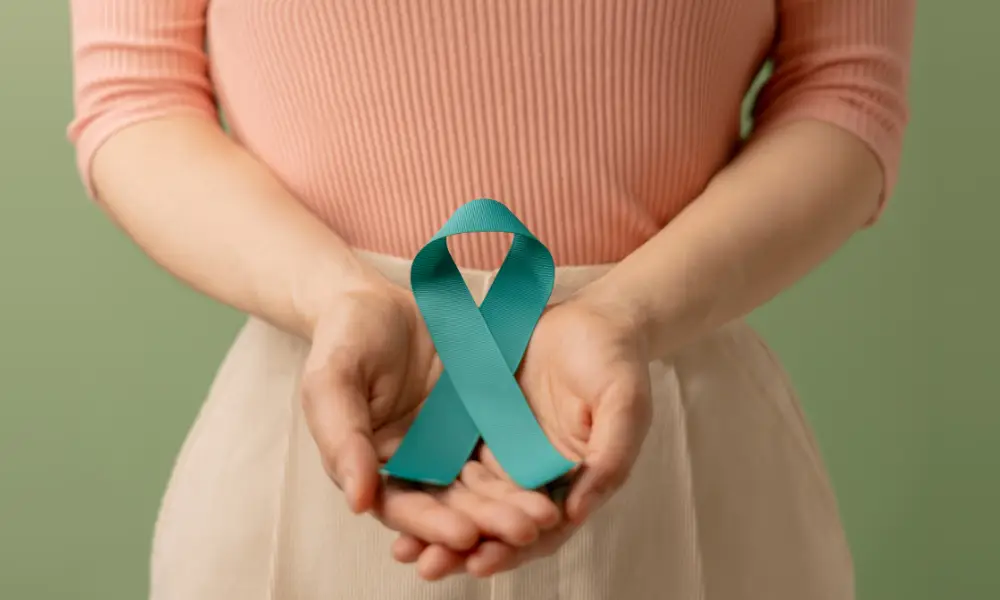Polycystic Ovary Syndrome (PCOS) affects millions of women worldwide, causing a range of symptoms from irregular periods to fertility challenges. While non-surgical interventions like lifestyle changes and medications often play a crucial role in managing PCOS, some cases require surgical intervention. In this comprehensive guide, we explore the ins and outs of surgical menopause treatment, including types of procedures, risks, benefits, and the crucial decision-making process.
Contents
Causes And Symptoms Of Surgical Menopause 
Surgical menopause occurs when a woman undergoes surgical removal of both ovaries (bilateral oophorectomy) or removal of the uterus along with the ovaries (total hysterectomy with bilateral oophorectomy). This surgical procedure induces menopause abruptly, without the gradual hormonal changes that typically occur in natural menopause. Here are the causes and symptoms associated with surgical menopause:
Causes
- Oophorectomy
Removal of both ovaries is the primary cause of surgical menopause. This procedure eliminates the main source of estrogen and progesterone production in the female body. - Total hysterectomy with bilateral oophorectomy
In cases where the uterus and both ovaries are removed, surgical menopause is also induced, as the ovaries play a crucial role in hormonal balance.
Symptoms
Hot flashes and night sweats: Sudden drops in estrogen levels can lead to intense and frequent hot flashes, causing a sudden feeling of warmth, flushing, and sweating.
- Vaginal dryness and discomfort
Reduced estrogen levels can result in a decrease in vaginal lubrication, leading to dryness, itching, and discomfort during sexual activity. - Mood swings and emotional changes
Hormonal fluctuations can impact mood, leading to irritability, mood swings, anxiety, or even depression in some cases. - Sleep disturbances
Hormonal changes may disrupt sleep patterns, causing difficulty falling asleep or staying asleep, and contributing to fatigue. - Changes in sexual function
Surgical menopause can affect libido and arousal due to hormonal changes and vaginal dryness. - Bone density loss
Estrogen plays a crucial role in maintaining bone density. The decline in estrogen levels after surgical menopause can increase the risk of osteoporosis and fractures. - Cognitive changes
Some women may experience difficulty with memory and concentration during surgical menopause. - Weight gain
Changes in hormone levels can contribute to weight gain, especially around the abdomen. - Menstrual cycle cessation
Surgical menopause results in an immediate cessation of menstrual periods.
Types Of Surgical Procedures
Ovarian Drilling
Ovarian drilling, also known as ovarian diathermy or ovarian electrocautery, is a surgical procedure used in the treatment of polycystic ovary syndrome (PCOS) and infertility. PCOS is a condition in which the ovaries contain multiple small cysts, leading to hormonal imbalances and irregular menstrual cycles.
- During ovarian drilling, a surgeon makes small incisions in the abdomen and inserts a special instrument, such as a needle or laser, to puncture or burn tiny holes in the surface of the ovaries. This process is aimed at disrupting the ovarian tissue and reducing the production of androgens (male hormones) that are often elevated in women with PCOS.
- The goal of ovarian drilling is to induce ovulation, enhance fertility, and regulate menstrual cycles by restoring a more balanced hormonal environment. However, it is not always the first choice of treatment and is typically considered when other methods, such as medications to induce ovulation, have been unsuccessful.
- It’s important to note that while ovarian drilling can be effective in some cases, it is a surgical procedure with potential risks and complications. The decision to undergo ovarian drilling should be made in consultation with a healthcare provider based on an individual’s specific medical history and circumstances.
Ovarian Wedge Resection
Ovarian wedge resection is a surgical procedure that was historically used to treat polycystic ovary syndrome (PCOS) and infertility. This procedure involved removing a small wedge-shaped piece of tissue from the ovary. The goal was to disrupt the ovarian tissue and reduce the production of androgens (male hormones), which are often elevated in women with PCOS.
- During the ovarian wedge resection, a surgeon would make an incision in the ovary and remove a portion of the tissue. This procedure aims to restore hormonal balance, regulate menstrual cycles, and improve fertility by inducing ovulation.
- However, over time, ovarian wedge resection has become less common as other less invasive and more effective treatments for PCOS and infertility have been developed. Medications, lifestyle changes, and other fertility treatments are now often preferred before considering surgical interventions.
- It’s worth noting that while ovarian wedge resection was once a common approach, it has become less common in recent years. This is due to the development of alternative and less invasive treatments for PCOS, such as medications to induce ovulation and lifestyle modifications.
As with any surgical procedure, ovarian wedge resection has potential risks and complications, and it is typically considered after other treatment options have been explored. The decision to undergo ovarian wedge resection should be made in consultation with a healthcare provider based on an individual’s specific medical history and circumstances.
Laparoscopic Ovarian Diathermy
Laparoscopic ovarian diathermy is a minimally invasive surgical procedure used to treat certain gynecological conditions, particularly polycystic ovary syndrome (PCOS) and infertility associated with PCOS. It is also known as laparoscopic ovarian drilling.
- During laparoscopic ovarian diathermy, a surgeon makes small incisions in the abdominal wall and inserts a laparoscope, which is a thin, lighted tube with a camera attached. This allows the surgeon to visualize the ovaries and surrounding structures on a monitor. Small instruments are then introduced through additional incisions to perform the procedure.
- The surgeon uses either laser or electrocautery to make tiny punctures or burn small areas on the surface of the ovaries. This targeted treatment aims to disrupt the ovarian tissue and reduce the production of androgens (male hormones) that are often elevated in women with PCOS.
- The goal of laparoscopic ovarian diathermy is to induce ovulation, regulate menstrual cycles, and improve fertility by creating a more balanced hormonal environment. This approach is considered less invasive than traditional open surgery, with potential benefits such as shorter recovery times and reduced postoperative discomfort.
- Like any medical procedure, laparoscopic ovarian diathermy is not without risks, and the decision to undergo this surgery should be based on a careful evaluation of an individual’s medical history and circumstances. It is often considered when other treatment options, such as medications, have not been successful in managing PCOS-related symptoms.
Risks And Benefits Of Surgical Menopause Treatment
The safety of surgery for polycystic ovary syndrome (PCOS) depends on various factors, including the specific type of surgery, the patient’s overall health, and the expertise of the medical team performing the procedure. Two surgical interventions commonly associated with PCOS are laparoscopic ovarian diathermy (or ovarian drilling) and ovarian wedge resection.
- Laparoscopic Ovarian Diathermy (Ovarian Drilling)
- Safety
Laparoscopic ovarian diathermy is generally considered a safe procedure when performed by experienced surgeons. - Minimally Invasive
It is a minimally invasive surgery, which often means a shorter recovery time and reduced postoperative discomfort compared to traditional open surgery. - Risks
However, like any surgery, it carries some risks, including infection, bleeding, or injury to surrounding structures.
- Safety
- Ovarian Wedge Resection
- Safety
Ovarian wedge resection is a more traditional surgical approach that has become less common due to the availability of alternative treatments and the potential for postoperative adhesions. - Riskier
It is generally considered riskier than laparoscopic ovarian diathermy and may involve a longer recovery period.
- Safety
It’s important to note that surgery is usually considered after other less invasive treatment options have been explored and when the benefits of surgery outweigh the risks. The decision to undergo surgery for PCOS should be made in consultation with a healthcare provider based on an individual’s specific medical history, symptoms, and fertility goals.
As medical practices evolve, new treatments and approaches may emerge, so individuals with PCOS need to discuss the most appropriate and up-to-date options with their healthcare team. Always seek guidance from qualified healthcare professionals to make informed decisions about managing PCOS and associated symptoms.
Surgical Process And Recovery 
Post-operative care following surgery for polycystic ovary syndrome (PCOS), such as laparoscopic ovarian diathermy or ovarian wedge resection, is crucial for a smooth recovery. Here are some general guidelines for post-operative care:
- Follow Medical Instructions
- Adhere strictly to the post-operative instructions provided by your surgeon and healthcare team.
- Take prescribed medications as directed, including any pain relievers or antibiotics.
- Physical Activity and Rest
- Gradually resume light activities, such as walking, as advised by your healthcare provider.
- Avoid strenuous activities, heavy lifting, and intense exercise until given clearance by your surgeon.
- Wound Care
- Keep the incision sites clean and dry.
- Follow specific wound care instructions provided by your healthcare team.
- Watch for signs of infection, such as redness, swelling, or discharge, and report them promptly.
- Diet and Nutrition
- Follow any dietary guidelines provided by your healthcare provider.
- Stay well-hydrated and consume a balanced diet to support healing.
- Pain Management
- Take pain medications as prescribed to manage discomfort.
- Report any unusual or severe pain to your healthcare team.
- Follow-up Appointments
- Attend all scheduled follow-up appointments with your surgeon and healthcare team.
- Discuss any concerns or issues related to your recovery during these appointments.
- Monitoring for Complications
- Be aware of signs of potential complications, such as excessive bleeding, infection, or abnormal symptoms.
- Seek medical attention promptly if you experience any concerning symptoms.
- Resuming Normal Activities
- Gradually return to your normal routine based on the guidance of your healthcare provider.
It’s essential to remember that specific post-operative care instructions may vary based on the type of surgery performed and individual health considerations. Always consult with your healthcare team for personalized guidance tailored to your situation. Regular communication with your healthcare provider is key to ensuring a successful recovery and addressing any concerns promptly.
Financial Planning for PCOS Surgery
- Budgeting for Medical Expenses
Incorporating PCOS surgery costs into a comprehensive budget helps patients manage their finances effectively. This includes accounting for both expected and unexpected expenses. - Exploring Financing Options
For individuals facing financial constraints, exploring financing options, such as medical loans or payment plans offered by healthcare providers, can provide flexibility in managing the costs. - Seeking Financial Assistance Programs
Some medical facilities offer financial assistance programs or sliding scale fees based on income. Inquiring about these programs can provide additional support for those in need.
Cost-Effective Decision-Making
- Considering Alternatives
Before committing to surgery, patients should discuss potential alternatives with their healthcare providers. Non-surgical approaches may be viable options, impacting the overall financial burden. - Seeking Multiple Opinions
Obtaining second opinions from different healthcare professionals can provide a more comprehensive understanding of treatment options and associated costs. - Evaluating Long-Term Benefits
While surgery may involve upfront costs, evaluating the long-term benefits, such as improved health, reduced medication expenses, and enhanced quality of life, is essential.
Conclusion
Navigating the financial landscape of PCOS surgery requires a thoughtful and informed approach. Understanding the costs, insurance coverage, and available financial assistance programs empowers individuals to make well-informed decisions. By incorporating financial planning strategies, patients can focus on their health without the undue burden of financial stress.
If you are facing menopause related issues, menopause treatment at HerMantra can help. Book your free trial online menopause treatment session now.





